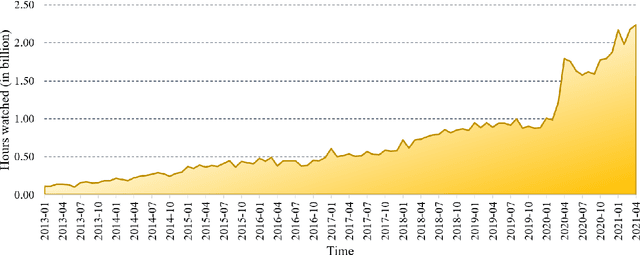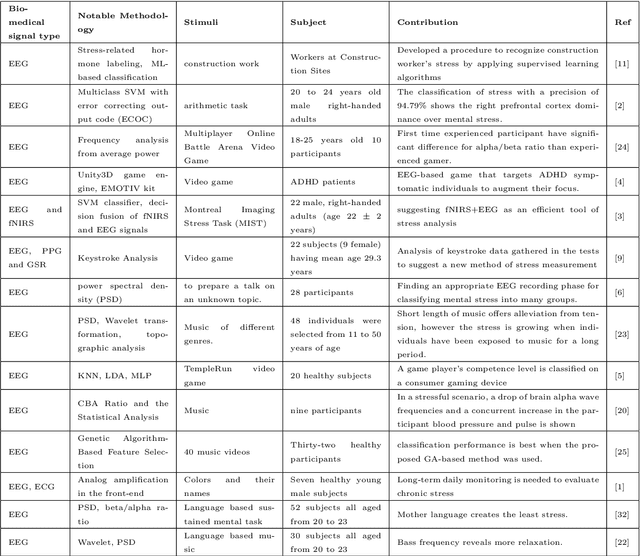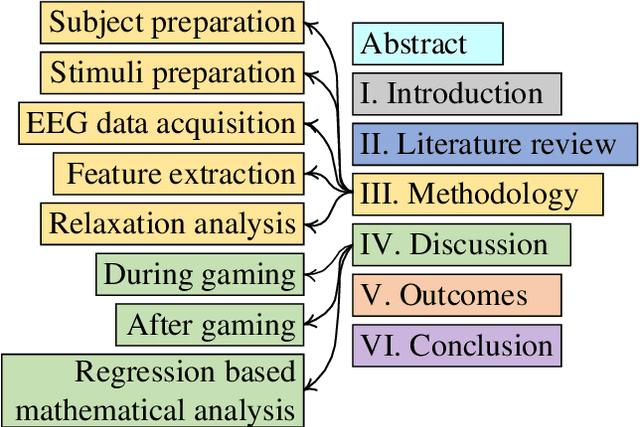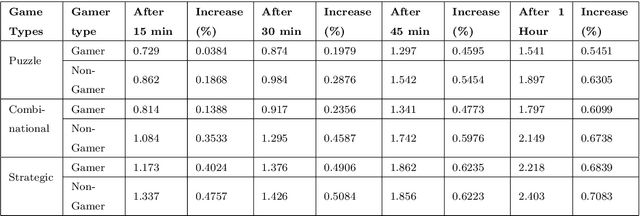EEG based stress analysis using rhythm specific spectral feature for video gameplay
Paper and Code
Sep 27, 2021



For the emerging significance of mental stress, various research directives have been established over time to better understand the causes of stress and how to deal with it. In recent years, the rise of video gameplay is unprecedented, further triggered by the lockdown imposed due to the COVID-19 pandemic. This paper presents an end-to-end stress analysis for video gaming stimuli using EEG. The PSD value of the Alpha and Beta bands is computed to calculate the Beta-to-Alpha ratio (BAR). In this article, BAR is used to denote mental stress. Subjects are chosen based on various factors such as gender, gameplay experience, age, and BMI. EEG is recorded using Scan SynAmps2 Express equipment. There are three types of video gameplay: strategic, puzzle, and combinational. Relaxation is accomplished in this study by the use of music of various pitches. Two types of regression analysis are done to mathematically model stress and relaxation curve. Brain topography is rendered to indicate the stressed and relaxed region of the brain. In the relaxed state, the subjects have BAR 0.701, which is considered the baseline value. Non-gamer subjects have an average BAR of 2.403 for 1 hour of strategic video gameplay, whereas gamers have 2.218 BAR concurrently. After 12 minutes of listening to low-pitch music, gamers achieved 0.709 BAR, which is nearly the baseline value. In comparison to Quartic regression, the 4PL symmetrical sigmoid function performs regression analysis with fewer parameters and computational power.
 Add to Chrome
Add to Chrome Add to Firefox
Add to Firefox Add to Edge
Add to Edge